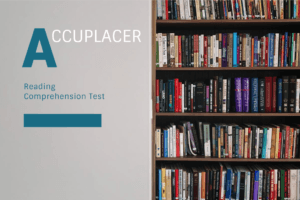To spot the formation and complicated structure of the passage is almost like an art form. Thus, it is of utmost importance that you understand how learning sentence skills will significantly help you to read a passage more professionally and quickly.
Accuplacer’s sentence skills are an ideal way to perfect your rudimentary skills into something more advanced. Consequently, it will help you realize your strong and weak points.
This article aims to focus on boosting your progress and response mechanism to give the right and appropriate answer to every question. So, dive in to learn how to pass the Accuplacer’s Sentence Skills test.
How Many Questions Can I Expect?
Accuplacer’s sentence skills section contains 20 questions that aim to analyze your understanding of your English grammar and sentence building.
What is the Nature of Questions?
Sentence Correction and Reconstruction
Students will have to answer two kinds of questions. The first is the correction of sentence questions, where you will have to rephrase or reword the given underline the portion. Moreover, the second category consists of the reconstruction of the sentences, which tests your expression ability. However, the rewriting has to be in a manner that does not lose the meaning or intent of the original sentence.
Grammatical Outline
You might be aware of the fact that the grammar structure comprises eight parts of speech. Starting from nouns, you will need to identify proper, common, general, and collective nouns. In addition, you cannot talk about nouns without taking pronouns into the same equation.
You can move on to distinguish between transitive and intransitive verbs. However, you should also be ready for linking and action verbs as per sentence structures.
In addition, many students restrict themselves at verb types, but you should continue to practice verbs with various tense sentences. Conjugating verb, for instance, changes the form of a verb.
The mood of a text material can tell you quite a lot about the grammatical structure. From indicative, imperative to subjunctive mood, you can grasp the tonal quality of the source material. Furthermore, adjectives will help you discern relative and absolute comparisons. You could use the same technique with the adverbs through the positive, comparative, and superlative degree of comparisons.
You should note that the students who intrinsically know how to make the right use of prepositions end up identifying and even writing the correct sentences. Moreover, coordinating conjunctions bridge the gap or extend a sentence. Subordinating conjunctions, however, showcase a more professional outlook.
Understand Punctuation
The hallmark of sentence skills necessitates that you learn to capitalize words. You can capitalize proper nouns, names, days, months, titles, adjectives, and the first word of a sentence or quote. You should not be to learn that small things carry the most weight in grammar. Therefore, adopt the use of periods for declarative, imperative sentences, and abbreviations.
Students can apply the same rules to identify the right use of question marks, exclamation marks, commas, semi–colons, parenthesis, quotation marks, apostrophes, hyphens, and dashes. Commas, however, can be tricky since you can modify them as a nonessential or appositive modifier.
Improve the Quality of Sentences and Paragraphs
A sentence could either have a subject or predicate. In simple terms, a subject helps you understand the nature of a sentence while the predicate explains the subject. Similarly, subject–verb agreements are suitable for singular and plural form of writing. The purpose of this entire sub-section is to help you understand when subjects can and cannot join each other in a sentence.
In addition, it is so easy to get lost in the indefinite pronouns and adjective compounds such as either, neither, each, everybody, everyone, anybody, and anyone. The trick is to go back to the roots and understand the plural and singular meaning of a text.
You can use complements as direct or indirect objects. The nature of complements can be noun, pronoun, or adjective in a sentence. The rare occurrence of the antecedent in a sentence is also possible, which replace or separate the verb. The more you are familiar with the pronouns, the more ease you will have to recognize antecedents. However, the same pronouns also rely on the subject, objective, and possessive case.
Homophonic and Homographs
The confusion of words is quite common among students who partake in the sentence skills test. For instance, there, their, and they are merely sound homophonic but represent completely different in terms of spelling and definition. Another example could be of it, and it’s, which even competent writers often get wrong
Homographs, on the other hand, have the same spellings but with the several underlying meanings. In addition, these words matter if you want to get the contextual meaning of a paragraph right. For example, a fine could be something very small or thin and as a penalty for an offense.
Apply Dependent Clauses
With dependent clauses, you can tweak the nouns and pronouns. A sentence may contain adjective, adverb, or noun clause.
You should know that a phrase does not necessarily translate into a sentence. It is an incomplete form of a sentence. Students can use verbal, appositive, and absolute phrases to navigate the statement. In addition, the structure of sentences can be simple, compound, complex, or compound–complex. These same sentence structures help you eliminate the dangled and misplaced modifiers in a sentence.
The connectivity of the sentences also depends on the parallelism and subordination. Though the complexity of the rules may put you in a state of confusion, never lose the sight of simplicity and how it can help you find the contextual clues.
Why Prepare for Sentence Skills Test?
The academic institutes view your grammatical understanding as one of the leading factors of qualification. Besides, English courses are in a manner that inherently expresses themselves. In hindsight, it opens up your capacity to form clear sentences and express argumentative points.






